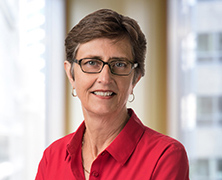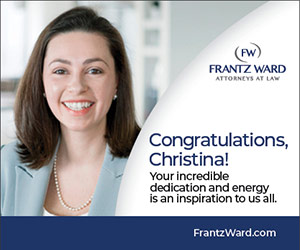IMPRESSIVE STEM CAREER ACROSS TWO PROFESSIONS
EMPHASIS ON EDUCATION AND FEMALE ROLE MODELS
Dr. Ronda Moore has had a multifaceted STEM career across two different professions, and continues to break new ground every day. With two impressive careers in STEM – first as a veterinarian and now as a patent lawyer – she has achieved some of the highest levels of accomplishment and accolades across each profession.
Using her experience as a veterinarian and scientist, and background in pathology, she works as an IP lawyer advising inventors and senior management of pharmaceutical, biologic, medical device, and medical diagnostic companies, start-ups and emerging companies, venture capital, and universities on a wide range of intellectual property issues.
Prior to entering the legal field, Moore practiced veterinary medicine at the Angell Memorial Animal Hospital in Boston. She also was a Resident in Pathology and a Research Fellow in Comparative Pathology at the N.E. Regional Primate Center, Brigham and Women’s Hospital, and Harvard Medical School. She is a Diplomate of the American College of Veterinary Pathology, Emeritus. She was an associate professor of Pathology at Tufts University Schools of Veterinary Medicine, Dental Medicine, and Medicine. While at Tufts University, she served for over a decade as the principal investigator on multiple National Institute of Health (NIH) sponsored medical research grants.
In the words of Ronda Moore:
Where do you see women in STEM in five years?
“Five years is not a lot of time for things to change in a big way. I think it will take more time – perhaps a whole generation – for women to make significant progress in STEM careers and for attitudes to change about women in STEM.”
What can be done to move women forward in STEM?
“Education, education, education and female role models. Without education and female role models, women will not advance in STEM.”
How can the world increase diversity in STEM fields?
“By providing more education and training opportunities, specifically tailored for girls, ideally at a young age before they have begun to pick up on all the negative messages out there about what girls can and can’t do.”
What barriers are in the way to closing the gender gap in STEM?
“Unfortunately, there are still numerous barriers, with the overarching barrier being the low priority placed on closing the gender gap in STEM. This results in a lack of education, lack of resources, and a continuing lack of role models. Women in STEM are struggling with the time commitment to advance in their career versus meeting family obligations, and there is a lack of women interested in or able to support other women in STEM. This allows the current environment of negative attitudes about women in STEM and anemic support from men to continue.”
How is the world changing with respect to STEM?
“The only change I have seen is that women in STEM is being discussed, which is excellent.”







